I should have called this post 'poissons d'avril'...
Carp is a despised fish in the anglophone world. Unless they come from an Eastern European background, most Australians would not consider eating carp, for example. But here in central France we are neighbours with the important wetland known as the Brenne, where fish farming, especially carp, is traditional and is a significant contributor to the local economy. The favourite way locally to eat carp is either mashed into a paste called rillettes and spread on bread, or cut into strips (goujonnettes), battered and deep fried, and called frites de carpe.
Ingredients
200 g goujonnettes (strips) of carp
100 g flour
1/2 tsp baking powder
1/2 tsp salt
150 ml cold water
1 litre canola oil
Method
- Put the flour, baking powder, salt and cold water in a jug and blend with an immersion blender.
- Cover the batter and refrigerate for at least 30 minutes.
- Heat the oil in a large deep pot to 160 - 190 C.
- At the last minute, just before the oil reaches temperature, tip the carp into the batter and mix so all the carp is coated.
- Gently deposit the strips of battered carp one by one into the oil. Take care because the oil will foam and is super hot.
- Cook the carp for several minutes, until golden brown, stirring once or twice to make sure cooking is even.
- Take the battered fish out with a slotted spoon and drain on kitchen paper.
- Serves 2, with chips and mayonnaise.
The carp goujonnettes came from Fish Brenne and cost €11/kilo.
The secret to crispy batter is to keep the batter refrigerated until the last minute.
I wrote about having battered Brenne carp for lunch at the Martizay Goose Fair here (includes a local recipe for a beer batter).
When I spoke to my Dad yesterday he was planning to cook oven baked fish and chips for his dinner. I hope they turned out as yummy as these goujons of carp.
For details of our private guided tours of chateaux, gardens, wineries, markets and more please visit the Loire Valley Time Travel website. We would be delighted to design a tour for you.

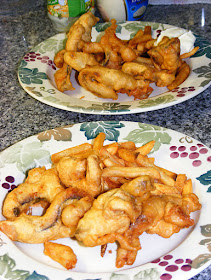
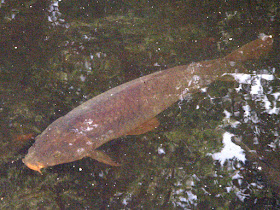
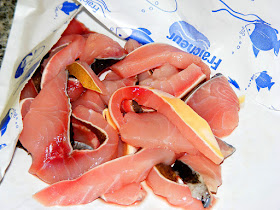
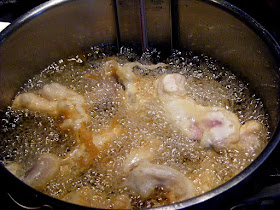
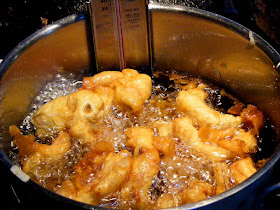
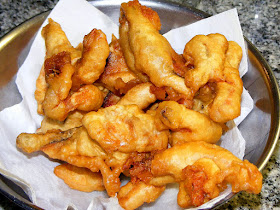
11 comments:
I always understood it is the bones that are the problem with Carp.
Yes they have Y shaped bones which are a pain to deal with, but mostly people don't like it because they are bottom feeders and have a reputation for tasting muddy. There is a prejudice against bottom feeders in people's minds too -- an idea that the fish are eating anything and everything which sets of people's disgust reflex. However, if carp are properly prepared -- purged and correctly filleted -- they are good eating.
In your recent posts about the fish ladder, etc., I've noticed your mention of shad. In the eastern US, this is the time of year in which to enjoy shad and shad roe. The Hudson River of NY State is the source I'm most familiar with. Actually it's getting a bit late in the season now...mid-March being the peak. I have been wondering whether the French enjoy the roe as much as we used to when living back East.
Your Goujons look delicious.
When you talk to locals you get the impression that shad (alose in French) was *the* most prized freshwater fish, but I don't recall anyone talking about roe.
Sounds good to me and well love any fish. Diane
The shad that produces the shad roe we know on the U.S. East Coast is called the American shad or l'alose d'Amérique (Alosa sapidissima) and isn't found in Europe.
Earlier I tried to leave a comment here about Br. goujons vs Fr. goujonnnettes but it seems to have vanished into thin air.
Oh! could you repeat it? These were sold as goujonnettes, but it hadn't occurred to me that goujons was actually an English word. Should I change the title of the post?
Ah, that explains it.
It was delicious.
My friend Louisette has also emailed to point out that the recipe should be called 'frites de carpe' in French, and that goujons are a different small fish in French. I'll change the post to reflect all this.
Post a Comment